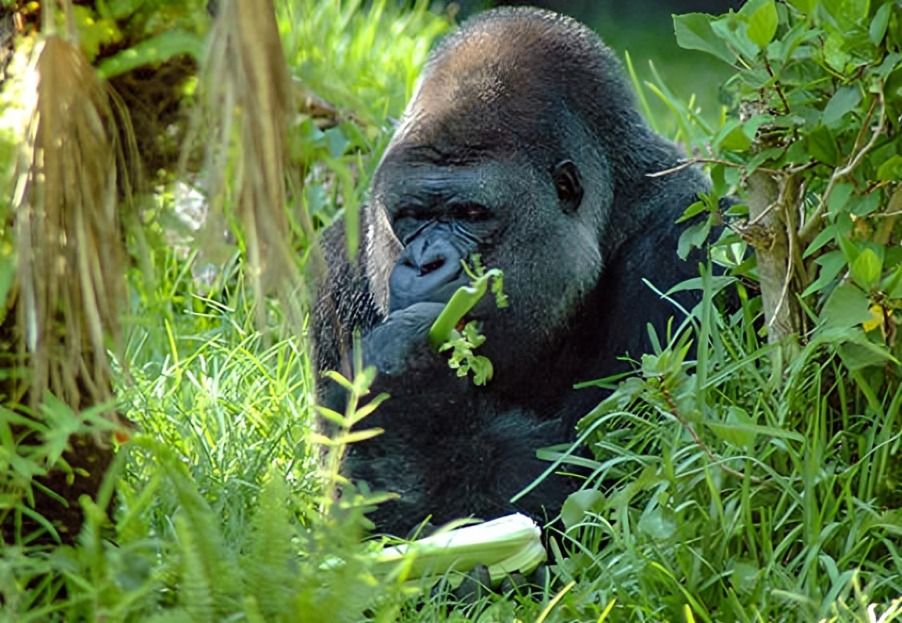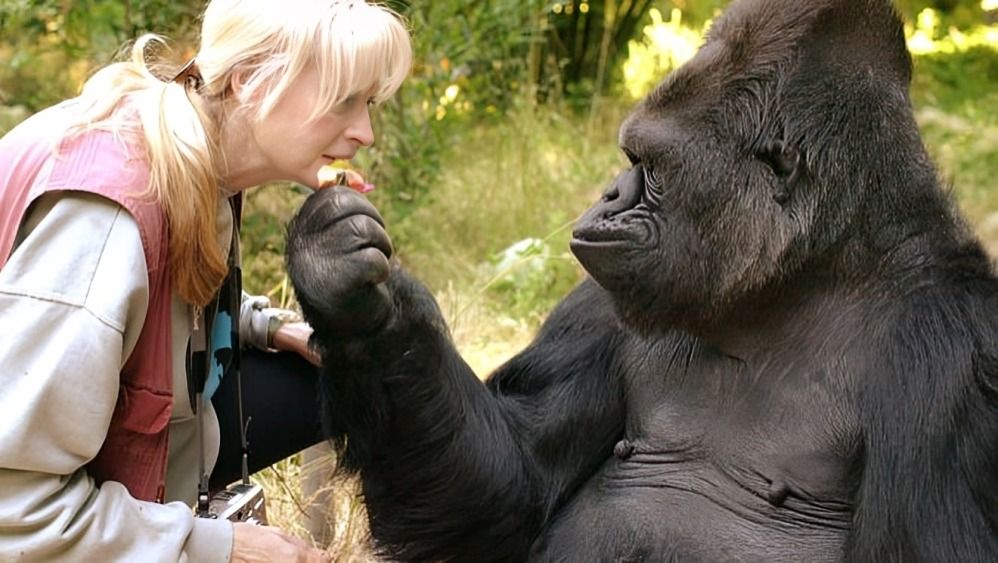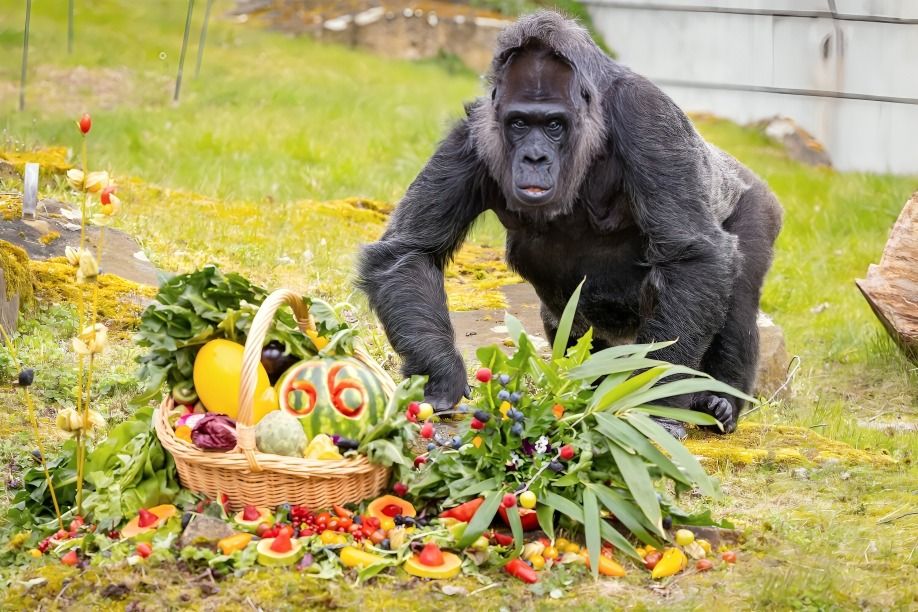
“
Known for their immense strength, gentle demeanor, and complex social structures, gorillas are among nature's most captivating creatures. In this blog post, we'll uncover 20 fascinating gorilla fun facts that highlight their intelligence, behaviours, and importance in the wild. From their unique habitats in central Africa to their remarkable adaptations for survival, prepare to be amazed by these incredible animals. Let's dive into the fascinating world of gorillas and discover what makes them such extraordinary beings!1
1
”
Adult gorillas are incredibly strong and capable of bending thick bamboo or lifting objects weighing up to 1,800 pounds. Their muscular build aids in foraging, climbing, and defending their troop.1
They live in cohesive groups led by a dominant silverback male, who protects and guides the troop. Females and juveniles form the core of the group, with each member playing a vital role in their social structure.2
Gorillas are found in the dense forests of central Africa, where they forage for plants and fruits to eat. Their habitat provides ample food sources and shelter which is crucial for their survival.3
Gorillas communicate through a variety of sounds, including grunts, hoots, and roars, to express emotions and coordinate with their group. Each vocalisation carries specific meanings that help them navigate their complex social interactions.4
Their diet consists mainly of leaves, stems, fruits, and occasionally insects, providing them with essential nutrients. They spend a significant portion of their day foraging to meet their dietary needs.5
Gorillas have been observed using tools like sticks to gather food or test water depth, showcasing their intelligence and problem-solving abilities. This behaviour highlights their adaptability to their environment.6
Gorillas share over 98% of their DNA with humans, making them our closest relatives and subjects of scientific study to understand human evolution. Studying gorillas offers insights into our own behaviour and evolutionary history.7
Gorillas are endangered due to habitat destruction, poaching, and diseases such as Ebola, which have devastated their populations. Conservation efforts are crucial to their survival in the wild.8
Approximately 1,063 mountain gorillas remain in the wild, as per the latest census. Mountain gorillas are a subspecies of the eastern gorilla, one of two gorilla species.9

Mountain gorillas spend roughly a quarter of their day eating, with about 85% of their diet consisting of leaves, shoots and stems. They also consume larvae, snails, ants, and occasionally roots, bark, and rotting wood for additional nutrients.
Gorilla pregnancies last about 8.5 to 9 months, similar to humans. After this period, a female gorilla gives birth to a single infant, which she nurtures and carries on her chest for several months, ensuring close bonding and protection.10
In the wild, gorillas can live up to 35-40 years, while those in captivity may live even longer under proper care. Their longevity depends on factors like habitat quality and access to healthcare.11
Gorillas have keen senses of sight and smell, helping them navigate their forest environment and detect approaching threats. They rely on these senses to find food and stay alert to danger.12
Gorilla noseprints are as unique as human fingerprints. Each gorilla’s noseprint has distinct patterns, which can be used for individual identification, similar to how fingerprints are used to identify people. 13
While they are generally safe from predators due to their size, young gorillas can fall victim to leopards and sometimes humans. Protective measures by adult members help safeguard vulnerable individuals.14
The tallest wild gorilla ever recorded stood 1.95 meters (6 feet 5 inches) from the top of its crest to the heel. This mountain bull was shot in the eastern Congo on May 16, 1938.15
Gorilla infants display thumb-sucking behaviour akin to human babies. This comforting action helps them self-soothe and is part of their early developmental stages. 16

Koko, a female western lowland gorilla, learned sign language during her captivity. Over her lifetime, she mastered over 1,000 signs and understood more than 2,000 English words, demonstrating remarkable cognitive abilities.
Despite their large size, gorillas are typically not aggressive toward humans unless provoked. They are generally peaceful and exhibit calm behavior, only showing aggression when they feel threatened, or their territory is intruded upon.17

Fatou, a western lowland gorilla at Zoo Berlin since May 1959, celebrated her 66th birthday in 2023. Born around 1957 in the wild, she was estimated to be two years old upon arrival. Gorillas typically live 40-50 years in captivity.


